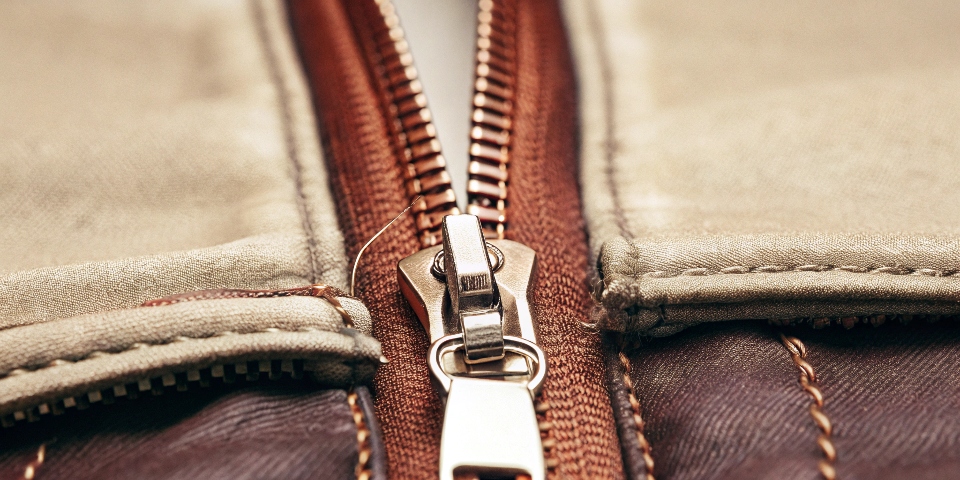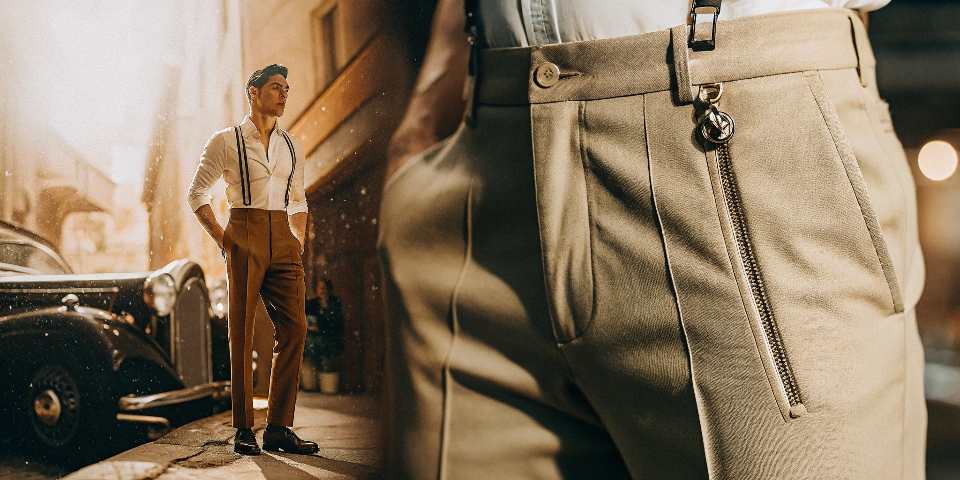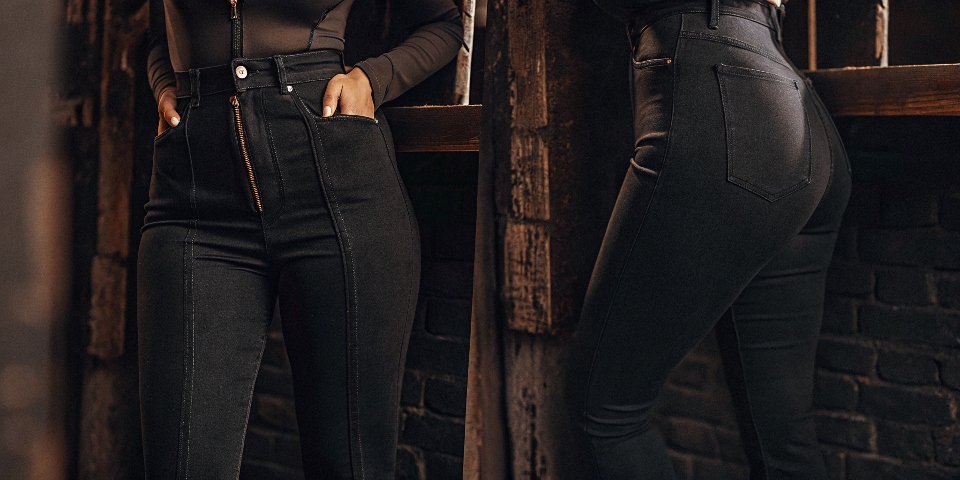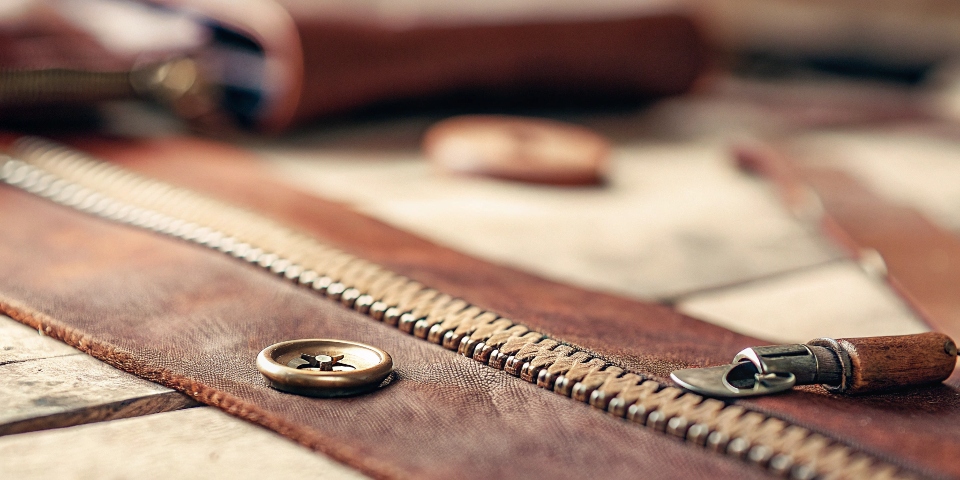You grab your favorite pair of jeans, but have you ever thought about the fly? Some have buttons, some have a zipper. This small detail is actually a major decision in denim design, a choice between tradition and modern convenience1.
The zipper exists on jeans primarily for convenience. It allows for a faster and easier way to fasten and unfasten the pants compared to the original button fly, making it the practical choice for the fast pace of modern life.
This choice between a zipper and a button fly is a constant conversation in my factory. When a designer like Dean brings me a new concept, we discuss the fly as a key feature. It affects the final look, the feel, and the story the garment tells. While the zipper won the battle for mass-market dominance2, the original button fly still holds a special place. Let's explore why the zipper became so common and what each choice signifies.
What is the point of a zipper on jeans?
You're getting dressed in a hurry. Fumbling with four or five metal buttons feels slow and clumsy. Isn't there an easier way to get your pants on and head out the door?
The main point of a zipper on jeans is speed and ease of use. A single, smooth motion secures the fly, which is far more efficient than fastening multiple buttons individually. It's a simple upgrade in convenience.
To understand the zipper, you have to remember what came before it. The very first blue jeans, patented by Levi Strauss in 1873, had a button fly. Zippers for clothing hadn't been widely adopted yet. For decades, buttons were the only option. When the zipper became a reliable and popular fastener in the 1930s, it was a technological revolution for clothing.
The benefit was obvious: speed. Instead of several small, repetitive actions, you had one quick pull. This convenience was a huge selling point. It made clothing feel more modern and functional. In my experience at DiZNEW, the zipper3 is the default choice for most large-scale productions because it meets the modern consumer's expectation for things to be quick and simple.
| Feature | Zipper Fly | Button Fly |
|---|---|---|
| Speed | High (single quick motion) | Low (multiple buttons to fasten) |
| Convenience | Easy to use, requires minimal dexterity | Can be fiddly, especially when new |
| Look | Creates a flat, smooth front | Can create a more textured, vintage look |
| Durability | Can snag, break, or slide down | Very durable; a lost button is easy to fix |
Why do men's pants have zippers?
You look at the history of menswear and see a lot of tradition. So how did a modern invention like the zipper take over the classic button fly on something as iconic as men's jeans?
Zippers became the standard in men's pants because they were marketed as a modern and practical improvement. After World War II, as menswear became more casual and function-oriented, the zipper's convenience perfectly matched the new, modern lifestyle.
The move to zippers in men's pants was a very deliberate shift. In the 1930s, there was even a "Battle of the Fly," where clothing designers and magazines debated the merits of buttons versus the new zipper. The zipper's champions promoted it as a symbol of progress. It created a flatter, cleaner front placket than a button fly, which appealed to a more streamlined and modern aesthetic.
For men returning from war and entering a new era of casual wear, practicality was key. The zipper was simply faster. It fit a world that was speeding up. While some denim purists4 always stuck to buttons, the zipper quickly became the standard for the vast majority of men's jeans and trousers because it was seen as the more sensible, forward-thinking choice for everyday life.
Why is there zip in girls jeans?
You know that the fit and silhouette are everything in women's fashion. A bulky front can ruin the look of a sleek pair of jeans. Why did designers decide the zipper was the right choice?
Zippers are standard in women's jeans because they create a flat and smooth front. This is critical for achieving a sleek silhouette, especially in fitted, stretch, or high-waisted styles where a button fly could add unwanted bulk or gapping.
While convenience is a factor for everyone, the main reason for zippers in women's jeans is aesthetics. It's all about the fit. A traditional button fly has layers of denim and metal buttons that create thickness. This can work for relaxed, vintage-style fits, but it's a problem for the slim and skinny jeans that have dominated women's fashion for decades. A zipper allows the front of the jean to lie perfectly flat against the body. This creates a much smoother, more flattering line from the waist down through the hips.
As I guide designers, if the goal is a second-skin feel or a sharp, clean look, the zipper is almost always the technically superior choice. It supports the silhouette instead of interfering with it, making it the foundation for countless modern fits.
What is the significance of the zipper?
You see it on jackets, bags, and pants. It's just a simple fastener. But is the zipper just a piece of hardware, or does it represent a bigger idea in the history of clothing?
The zipper's true significance is its role as a great modernizer. It represents the shift in clothing towards speed, mass production, and everyday convenience, moving fashion away from time-consuming traditional closures and towards pure functionality.
The zipper changed more than just how we fasten our pants; it changed our relationship with clothing. It was a victory for convenience over tradition. But this victory came with a trade-off. In my work, I see a growing appreciation for the classic button fly. Brands and designers who choose buttons are making a specific statement. They are choosing heritage over speed.
A button fly5 is more durable. If a button comes off, you can sew it back on. If a zipper breaks, the pants are often ruined. Buttons also allow for slight adjustments in fit, and as they press against the denim through the washing process, they create unique fade marks that tell a story. The zipper is about efficiency. The button fly is about character.
| Aspect | Zipper Fly | Button Fly |
|---|---|---|
| Philosophy | Modern, Fast, Convenient | Traditional, Durable, Characterful |
| Aging Process | No unique aging effect | Creates distinct fade marks around the placket |
| Repairability | Difficult to impossible | Easy; buttons can be re-sewn |
| Fit Customization | Fixed fit | Allows for slight waist adjustments |
Conclusion
The zipper was added to jeans for modern speed and convenience. It creates a flat front perfect for many styles. But the classic button fly endures as a symbol of tradition and durability.
-
Understand how convenience shapes fashion trends and consumer choices. ↩
-
Find out what made zippers the preferred choice in the fashion industry. ↩
-
Explore the evolution of the zipper and its impact on modern clothing design. ↩
-
Discover the values and preferences of denim purists in the fashion world. ↩
-
Discover the reasons behind the enduring appeal of the button fly in denim fashion. ↩











